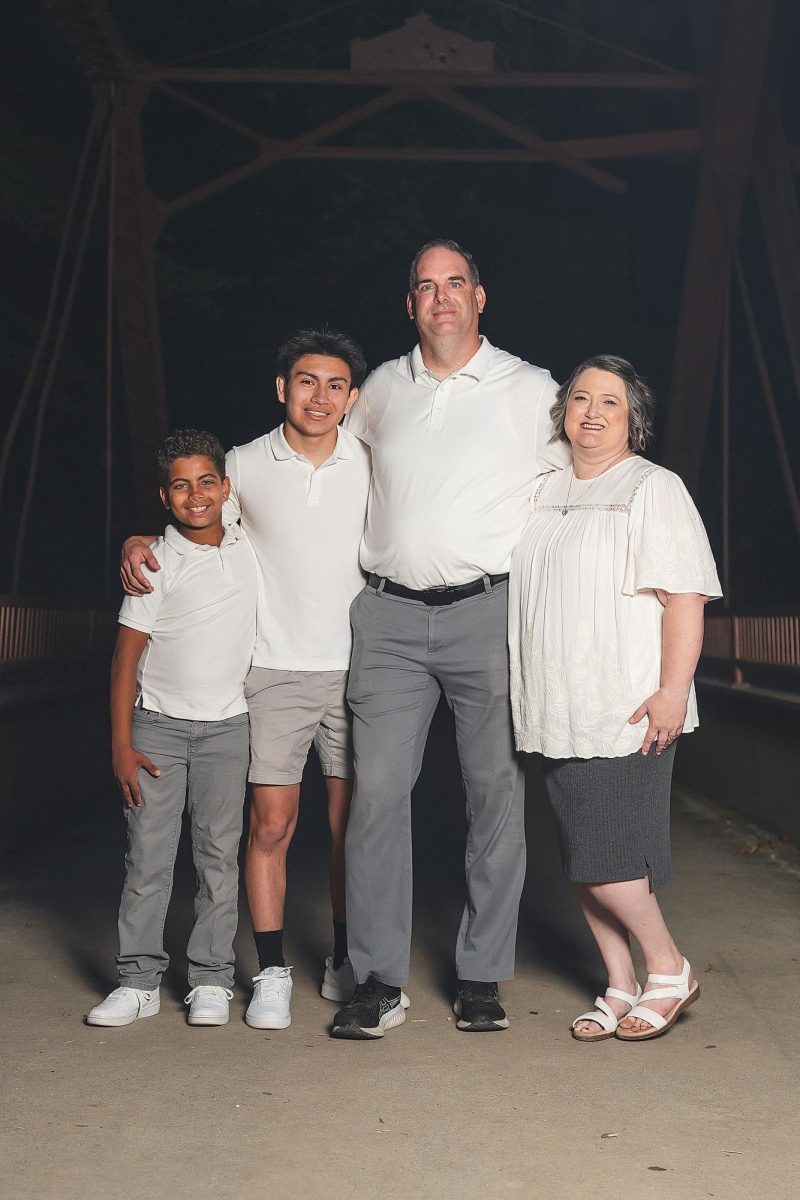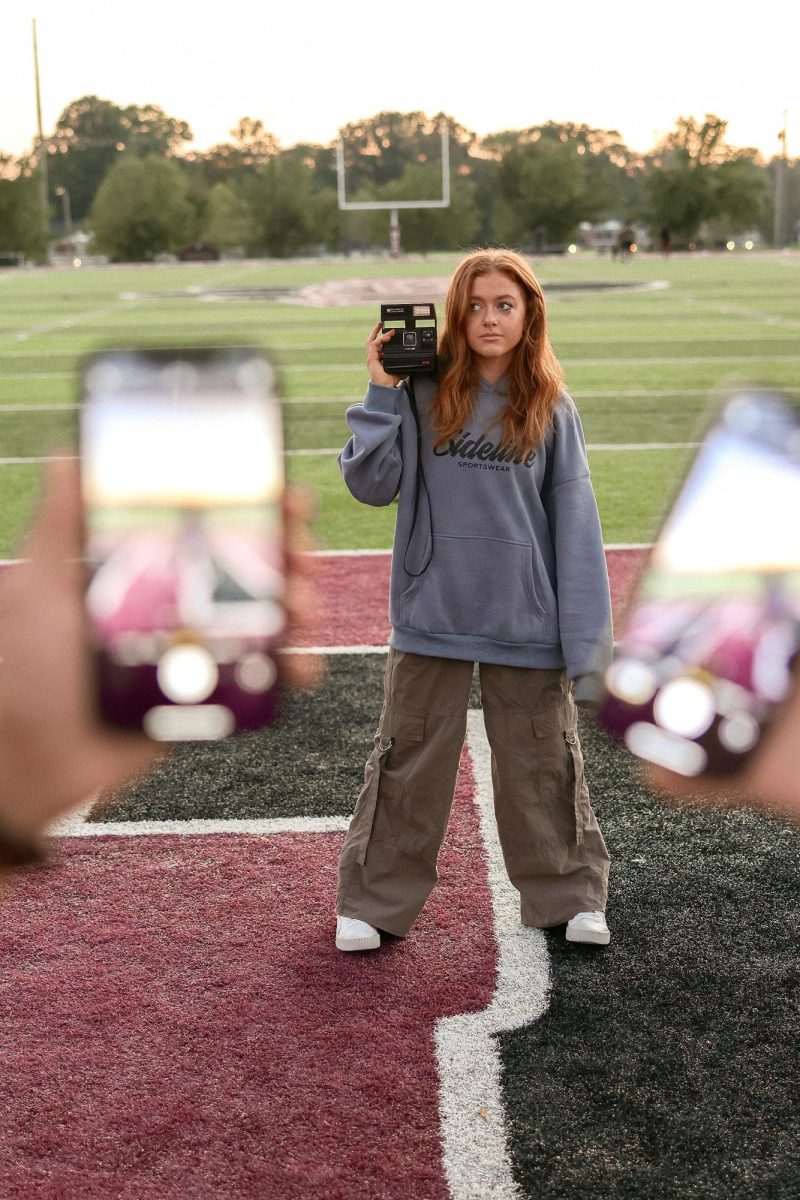I’ve always liked or disliked certain textures whether it be food, clothes or anything else. I hate the way broccoli tastes in my mouth and the way its florets feel on my tongue. I love my steak to be tough and not tender, yet I can’t stand it when my corn on the cob is the same. I like how cotton clothing feels on my skin, but I hate the way wool clothing feels. I love the texture of the eraser on my pencil. Was this all a gift or a curse? For the longest time, I thought these sensory issues were normal and that maybe everyone else had some sort of sensory issues, too.
When I was in first grade, I would constantly tear up my erasers and roll the shavings up into little balls just because I liked the texture. The teachers would try to stop me from doing this and would even go to the lengths of getting me small stress toys to play with, like a stress ball. But, for me, it just wasn’t the same. I didn’t really like the textures of those toys, so I kept tearing up and playing with my erasers.
When I was in third or fourth grade, I started going to food therapy at “Kids Can Do” in Danville to try and help myself get over my sensory issues with food. My therapists and I would cook several different foods that I wouldn’t normally eat for me to try. I hated most of the foods either because of how the texture felt in my mouth, how it tasted, how it looked, how it smelled and sometimes all four of those things. I would try the foods at therapy, but this would never cross over to my homelife. It still hasn’t.
In fifth grade, I was recommended to go to Edleson and Associates in Louisville. I don’t remember exactly what I did there, but I do know that I was given a diagnosis. I couldn’t remember what this diagnosis was, and I never thought about it again until I was 15 years old, sitting in a waiting room with my mom, about to get my wisdom teeth removed. My mom sat beside me filling out one of those medical clipboards doctors give to patients before a surgery. I looked over her shoulder and noticed she had circled autism under one of the sections on the paper. I, thinking I didn’t have autism, asked her why she had circled it. She told me about the diagnosis I got from the Edleson center. I did, in fact, have autism.
Autism spectrum disorder is a neurological and development disorder that affects how people interact with others, communicate, learn and behave. It can be diagnosed at any age. It’s classified as a development disorder because symptoms begin to appear as early as two years old. People with autism often have difficulty communicating and interacting with others, restricted interests and repetitive behavior, and symptoms that affect their ability to function in school, work, and other areas in life. Autism is known as a spectrum disorder because there’s a wide variation in the type and severity of symptoms that autistic people can experience. More men than women get diagnosed with autism. With diagnostics being primarily based on autistic males, the male-to-female ratio for autism is estimated to be 4:1. This could change to 2:1 when autism is more diagnosed in women.
From the moment my mom told me I was autistic, a lot of things started to make sense to me. The way I act, the way I think, the things I do, as well as my eating habits. It all made sense. I felt inspired to do some research on autism. I wanted to learn more about myself. I started to recognize some of those autistic symptoms in myself. They aren’t severe, but they are definitely there. I have a hard time interacting with other people. I have restricted interests and repetitive behavior. For example, I feel nervous when I must speak to people I don’t normally talk to, and I always feed my pets at the same time every day when I’m home.
Something else I learned about are autistic stimulations – or stims for short – and what they are. Stims are repetitive behaviors that autistic people use to manage their emotions and cope with overwhelming situations. This can include body movements such as hand flapping, rocking, jumping, spinning, head-banging or complex movements. Other types of stims are object use, sensory stimulations, vocal stimulations and olfactory or taste stimulations. Object use is the repetitive use of an object. This can include flicking a rubber band, twirling a piece of string, etc. Sensory stimulations are repetitive activities that involve the senses, such as repeatedly feeling a particular texture. Vocal stimulation can include humming, singing, repeating words or phrases, making animal sounds, or even screaming and shouting. Olfactory and taste stimulations can include sniffing or smelling people or objects as well as licking or tasting objects. I started to realize I did have stims of my own. Biting my fingers, fidgeting with my pencil’s eraser, constantly jumping, humming, singing, occasionally making animal sounds as well as sniffing soap every time I wash my hands.
I learned that autistic people do have sensory issues whether it be with clothes, food, light or noise. Autism is the reason why I’m such a picky eater. It’s the reason why I can’t stand for any light to shine in my room at night. It’s the reason why I can’t stand to hear my dogs barking at night.
While doing all this research, I read some stories from other autistic people talking about how they were bullied for being different, causing them to do something called masking. Masking, or camouflaging, is a way for autistic people to cope by creating a persona. It’s used to hide autistic traits to appear “normal.” According to autism.org.uk, “masking [is toxic and] can have a devastating impact on mental health and sense of self.” There were lots of these stories. I’m one of the lucky few who didn’t get bullied for my autism. I’m thankful for that, but I feel bad about it, too. It isn’t fair for those who have been bullied for it. We can’t help it if our brains are wired differently than others. It’s not our fault if we think differently than most people. We are born the way we are, and that’s the way it’s meant to be.
I don’t understand why people are bullied just for having autism. We are humans, too, just like everyone else. In my opinion, a lot of neurotypical people treat autism as if it’s a curse. I see it as a gift. A blessing even. It’s what makes me who I am. It’s a part of me and if I had the option to get rid of it, I don’t think I would. It makes me unique and creative. Yes, it makes it hard to try new foods. Yes, it gives me a lot of other sensory problems. But, I wouldn’t have it any other way.
























Charlotte Carter • Dec 6, 2024 at 8:48 am
Beautiful piece and I learned so much!